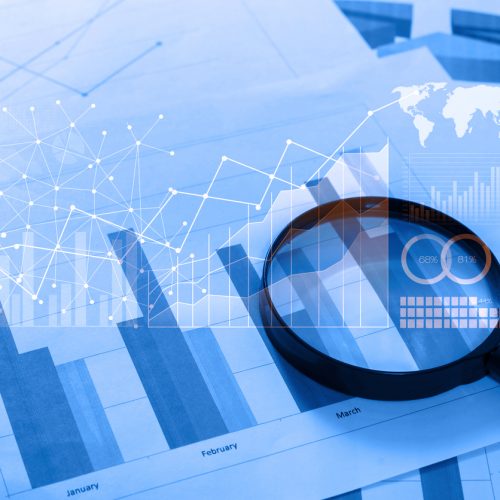Download the methodology behind RMI's findings in the electricity sector.

Book | 2011
Reinventing Fire: Electricity
Executive Summary
Electricity is the connective tissue of the information age, powering everything from smartphones to giant data centers and enabling virtually every transaction in daily life. Electricity is the lifeblood of both buildings (72 percent) and industry (28 percent). The U.S. electricity system is the greatest engineering achievement of the 20th century. Yet while the information economy creates new value by innovating to meet diverse customer preferences, the electricity system remains slow to respond and reluctant to adapt. To meet market expectations, capture new technological opportunities, and manage risks, the electricity industry must accelerate its own change toward speed of the information technology (IT) that is pervading society. That shift can also help liberate America from its dependence on fossil fuels, one-third of which are burned by their biggest user—68 percent-fossil-fueled power stations.
Today’s electricity system faces a perfect storm of deferred major infrastructure investments, financial constraints, stagnating or falling demand, a fundamentally altered competitive landscape, and evolving environmental and health priorities. But there’s also an astonishing menu of solutions. Rapid technological progress has overcome or bypassed many previous constraints on how electricity is made and delivered. Advances in renewable generation technologies, communications and controls, distributed generating technologies, and storage have laid the foundation for a customer-centric electricity system that is renewable, distributed, and resilient.
The central challenges in adopting these advances are no longer technological or economic; they are cultural and institutional. Their resolution needs a coherent vision of how this vast industry can execute the greatest change in its history.
Shifting to Efficient Use and Renewable Supply
Reinventing Fire envisions first how systematically and dramatically increased energy efficiency could flatten or even modestly decrease total electricity use, despite a 158 percent bigger 2050 economy and electrified autos. In both buildings and industry, smarter technologies and designs can cost-effectively deliver the same or better services with 70 percent less electricity per dollar of GDP than in 2010 (or 65 percent with electrified automobiles).
Next, most of America’s aging steam power plants can continue to be replaced by renewable energy sources, which since 2007 have captured half the world market for new generating capacity and now make up one-fourth its total and 18 percent of all power generation. Today’s commercially and practically viable renewable resources have the potential to generate over 20 times America’s total 2010 electricity use, and all regions have ample potential, though their mix differs widely. Extensive modeling based on market price and performance data suggests that the renewable energy needed to supply 80 percent or more of all U.S. electricity by 2050—probably all ultimately—can be captured cost-effectively (even without subsidy) and integrated reliably. A smarter electricity grid plus distributed generation, chiefly renewable, can also greatly enhance reliability and security.
Dramatic technological progress, production scaleup, and global investment are radically improving the costs and performance of maturing renewable power generation technologies, including wind and solar. Reliable power supply based largely on renewable and distributed resources can have total costs broadly comparable to those of business-as-usual—but comprehensively lower risks.
A smarter grid, omnidirectional flows of energy and information, and distributed generators will empower customers and increase adaptability. Operating existing electricity systems in nontraditional but proven ways can cost-effectively manage wind and photovoltaic power’s variability and uncertainty by four means: diversification in type and location, forecasting, integration with flexible generators and demand, and (if needed) real or virtual storage. Large thermal power plants are no longer the only nor the cheapest source of reliable power (the “baseload fallacy”), and their weak business case has triggered sharp declines in investment.
Evolving Business Models and Institutions
The emerging electricity system is far more varied, transparent, innovative, and entrepreneurial. Integrating pervasive information and demand-side technologies lets customers participate as “prosumers” who both consume and produce energy, can choose the reliability they want for different uses, and can earn revenue by unobtrusively providing such valuable services as flexible demand. Many demand-side and some supply-side technologies offer customers more choices, non-utility firms huge growth markets, and utilities both threats and opportunities. Utilities must make wrenching changes in their business models—or lose out to more nimble competitors, who for the first time can invest without regulators’ consent, bundling unregulated products into a potent “virtual utility” offering.
The regulatory compact, based on a fair return for providing low-cost, reliable power, must better match profit-making incentives to societal goals: for example, rewarding utilities for cutting customers’ bills, not for selling more electricity. Leveling the playing field and allowing and rewarding innovation can expand options, promote fair competition, and make the industry’s transition efficient and profitable. System operation and planning need wider regional cooperation and larger, faster markets. Creating the new electricity system also needs more R&D, more dialogue between sectors, and more pilot projects demonstrating fast-moving techniques for distributed resource integration, distributed intelligence, and grid architectures.
Four Futures, One Broad Direction
The U.S. electricity system’s unprecedented risks and opportunities now make “business-as-usual” unrealistic. Decades of steadily slackening demand growth have dwindled to about zero or less and can no longer be counted on to raise revenues. Just replacing aging U.S. power plants and infrastructure—for example, over 70 percent of U.S. coal plants, half of U.S. coal capacity, are over 30 years old and 33 percent over 40—would cost $3.5 trillion (undiscounted). The transmission and distribution grid is inherently prone to blackouts that scientists at Lawrence Berkeley National Laboratory estimate cost U.S. businesses and residents up to $160 billion annually. Perpetuating this system would not only degrade national security but also drive up carbon emissions 40 percent by 2050—nearly 600 percent above levels needed to meet U.S. treaty obligations.
Electricity’s carbon risks could be managed by new nuclear plants and “clean coal,” sustaining and even bolstering many of the power sector’s century-old institutions —traditional business models, vendors, and regulators, coal-mining, even railroads. But that wouldn’t meet all of the needs of the 21st century and would indeed create new risks: high and uncertain costs plus increased financial, fuel, security, and technological risks. Such “bet the company” investments in large conventional power plants would also foreclose other choices for decades.
Alternatively, climate-safe power from quintupling today’s utility-scale renewable capacity, so it meets 80–90 percent of 2050 electricity needs, would cost slightly less and cut carbon emissions even more. This approach would sustain or improve reliability while reducing financial, fuel, and technology risks. Finally, letting distributed generators compete and interconnect fairly could nearly eliminate blackout risks by organizing the grid into local “microgrids” that normally interconnect but can stand alone at need (“islanding”). This resilient future, already demonstrated in about 20 experiments worldwide and being successfully adopted in Denmark and Cuba, would cost about the same as business-as-usual, but would manage all its risks and maximize customer choice, entrepreneurial opportunity, and innovation.
In short, many different electricity futures are possible. They differ immaterially in cost but greatly in risk. Choosing a future with similar cost but far lower risk, while fitting and speeding powerful market trends, can restore American energy leadership and security by building the electricity system of the 21st century with high skill and ambition, just as we did with the technology of more than a century ago.
Resources
View the research behind RMI's findings in the electricity sector.
See how RMI is continuing to deliver on the Reinventing Fire promise in the electricity sector, today.

Purchase the book
Reinventing Fire is available in four languages and in paperback and digital versions.


